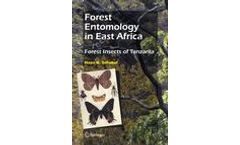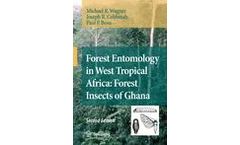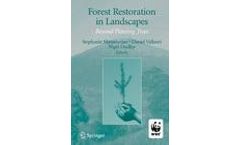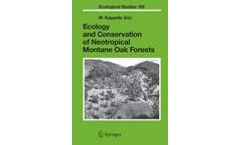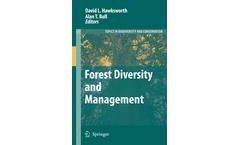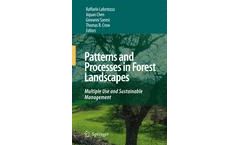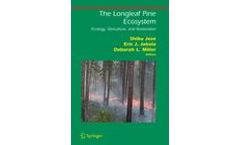forest-managers-to-implement-conservation books
13 books found
Forest wildlife conservation is critically required in many parts of the world today. This book presents a merger between the elements of wildlife conservation and habitat conservation, and explains how these disciplines can be used to promote the conservation of vertebrates in forests around the world. ...
East African forests, among the world’s most biologically rich and diverse, are subject to multiple pressures, including insects. As the first work to focus exclusively on East African forest insects, this monograph distils 135 years of scientific and historical literature extending from before the colonial era to the present into an authoritative survey of this region’s major pests of trees and ...
The forests of West Africa are complex, beautiful and under continued threat of over exploitation. This monograph, in its second edition, remains the only comprehensive source of information on economically important forest insects in West Africa. Many pest insects discussed in this book have the potential to greatly alter the utilization of these valuable tropical forests. Several key pests such ...
The importance of restoration continues to grow, and this book integrates the restoration of forest functions into landscape conservation plans. The global conservation organization WWF has made forest landscape restoration a key topic and priority for its environmental work. Due to the WWF’s extensive global reach, and together with its many partners and counterparts, it has acquired a ...
This comprehensive synthesis systematically covers the entire range of natural and managed oak forests in the highlands of tropical America. Originally, these forests were widely distributed, but largely through human impact large parts have disappeared and the remaining patches are under increasing threat. For the first time, aspects as diverse as the paleo-ecology, biogeography, stand structure ...
Natural forests with thousands of years of ecological continuity are unrivalled as the treasure store of terrestrial biodiversity on Earth. And while there is currently no fully comprehensive inventory of the biota associated with any given forest, it is reasonable to assume that in conserving natural forests we can conserve the myriads of unnamed bacteria, fungi, insects, mites and nematodes ...
This book covers the full breadth of forest entomology. It combines the work of forest entomologists working on the impact and management of forest pests with those involved in diversity assessment and conservation of insects in forests. Forests and Insects demonstrates that both these disciplines demand an understanding of population and community biology. The book covers such topics as ...
This book is a compilation of the results of strategic policy research carried out by the Forest Conservation Project of the Institute for Global Environmental Strategies (IGES), between 1998 and 2002. The project's main purpose is to shed light on measures to conserve biodiversity and use forests sustainably, particularly in the Asia-Pacific region. Project work was conducted by academics, ...
The forests of the earth are not only the source of a wealth of products such as timber, pulp, and charcoal, but are also of great importance in the absorption of carbon dioxide. Therefore, it takes little consideration to understand the dangers of overexploitation caused by economic development and population growth. With an eye on forest conservation and increasing carbon dioxide fixation, ...
Agroforestry research is central to developing methods for the sustainable use of natural renewable resources, evolving to address the needs of the coming century. It is now necessary to consolidate the scientific gains now being made in process-oriented research and to develop a policy framework to encourage the adoption of sustainable land use practices. Agroforestry plays an important ...
Increasing evidence suggests that the composition and spatial configuration – the pattern – of forest landscapes affect many ecological processes, including the movement and persistence of particular species, the susceptibility and spread of disturbances such as fires or pest outbreaks, and the redistribution of matter and nutrients. Understanding these issues is key to the successful management ...
With its 250-year history, Sustainable Forest Management (SFM) is now viewed as a model for managing forests worldwide. Yet despite the frequent use of the term there remain many questions concerning its meanings, criteria as well as its practical application. This book explores the current potential of SFM within the context of the rapid changes occurring in our natural and social environment, ...
The longleaf pine ecosystem, once one of the most extensive ecosystems in North America, is now among the most threatened. Over the past few centuries, land clearing, logging, fire suppression, and the encroachment of more aggressive plants have led to an overwhelming decrease in the ecosystem’s size, to approximately 2.2% of its original coverage. Despite this devastation, the range of the ...


